Smoked Pulled Pork is one of those go-to dishes that comes to mind when you think of great barbecue. It's a barbecue classic. Simply seasoned and smoked to perfection, pulled pork is a crowd-pleaser at any gathering. Read on to learn how to pick a roast, season it, smoke it, and make it tender and juicy smoked pulled pork that falls off the bone.
Selecting a Roast
The best cut of meat to use for making pulled pork is pork shoulder, also known as a Boston butt. It comes from the shoulder of the pig. This cut has a lot of connective tissue which will break down during the long cooking process, making the meat tender. These are commonly found at most grocery stores either boneless or bone-in. When picking a roast, look for a bone-in pork butt. The bone adds a ton of flavor, helps with the cooking process, and is easy to remove when the roast is done. A 6 - 8 pound roast is great for making smoked pulled pork.
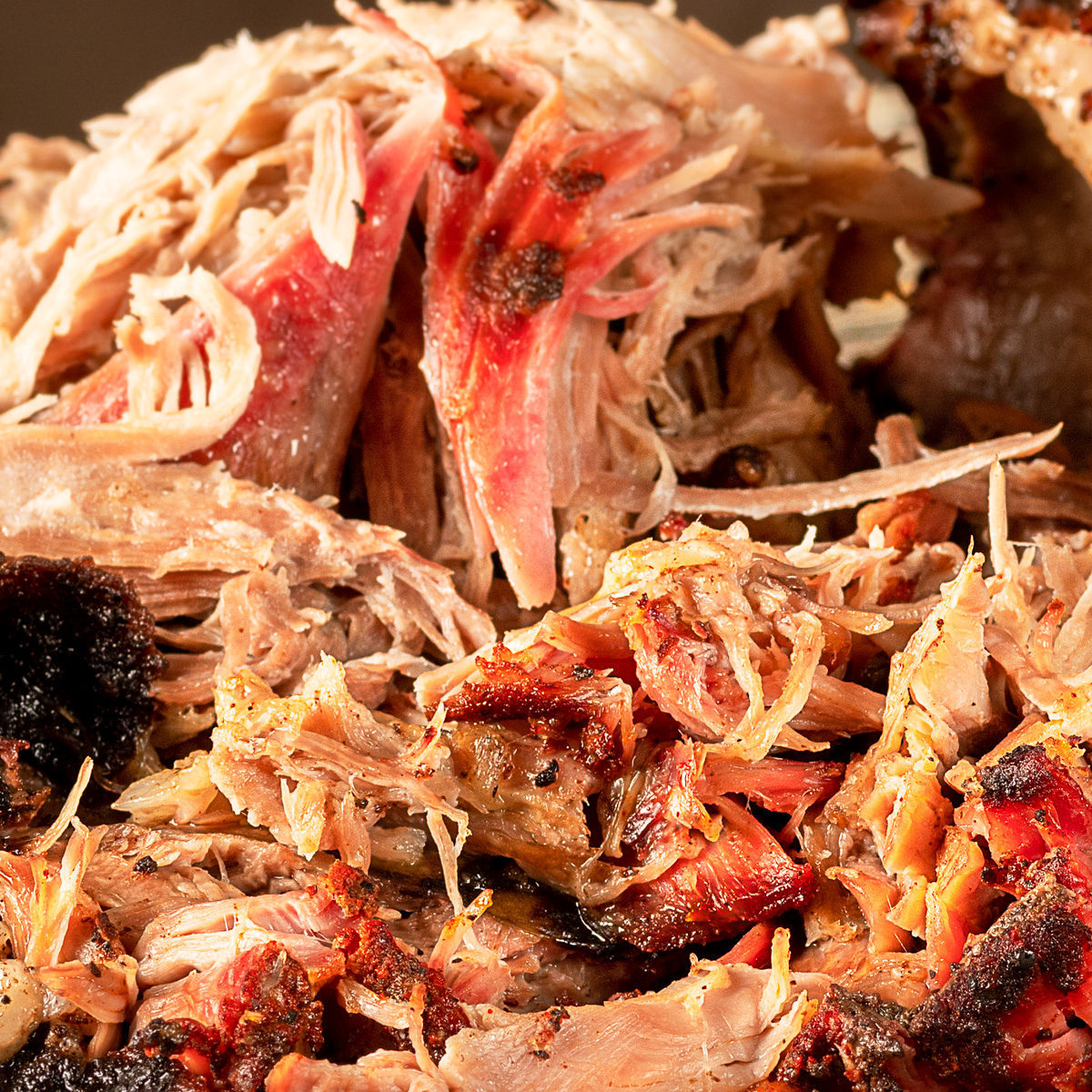
Pulled pork is a barbecue classic that's good any time of year.
This recipe was inspired by my other recipes for Smoked Pork Belly Burnt Ends, St. Louis Spareribs and Smoked Brisket and Burnt Ends.
Smoked pulled pork can be cooked on a pellet smoker, charcoal grill, slow cooker or offset stick-burner. Each has its own advantages and disadvantages. For this guide, we'll focus on the Kamado Joe ceramic cooker.
Ingredients
- Bone-in Boston butt pork shoulder
- Kosher salt
- Black pepper
- Paprika
- Olive oil
See recipe card for quantities.
Instructions
Preparing the Pork Butt
Remove the pork butt from the refrigerator and let it sit at room temperature for about an hour. Some roasts will have a thick fat cap on one side. Thick and/or hard pieces of fat do not render out during the cooking process. For that reason, it's best to trim them down to about a quarter of an inch thick. Next, score the remaining fat with a long knife in a crisscross pattern about 1 inch apart and just deep enough to penetrate the meat.
Prepare the Dry Rub
To prepare the seasoning the pork butt, start by making the dry rub. Combine the salt, black pepper and paprika in a bowl and stir well. Next, rub olive oil over the entire roast to help the seasonings adhere. Sprinkle the roast with the dry rub, making sure to apply it liberally and cover all sides of the meat. This will enhance the flavor and create a delicious crust on the pork butt. Be generous with the seasoning to ensure a well-seasoned and flavorful roast.
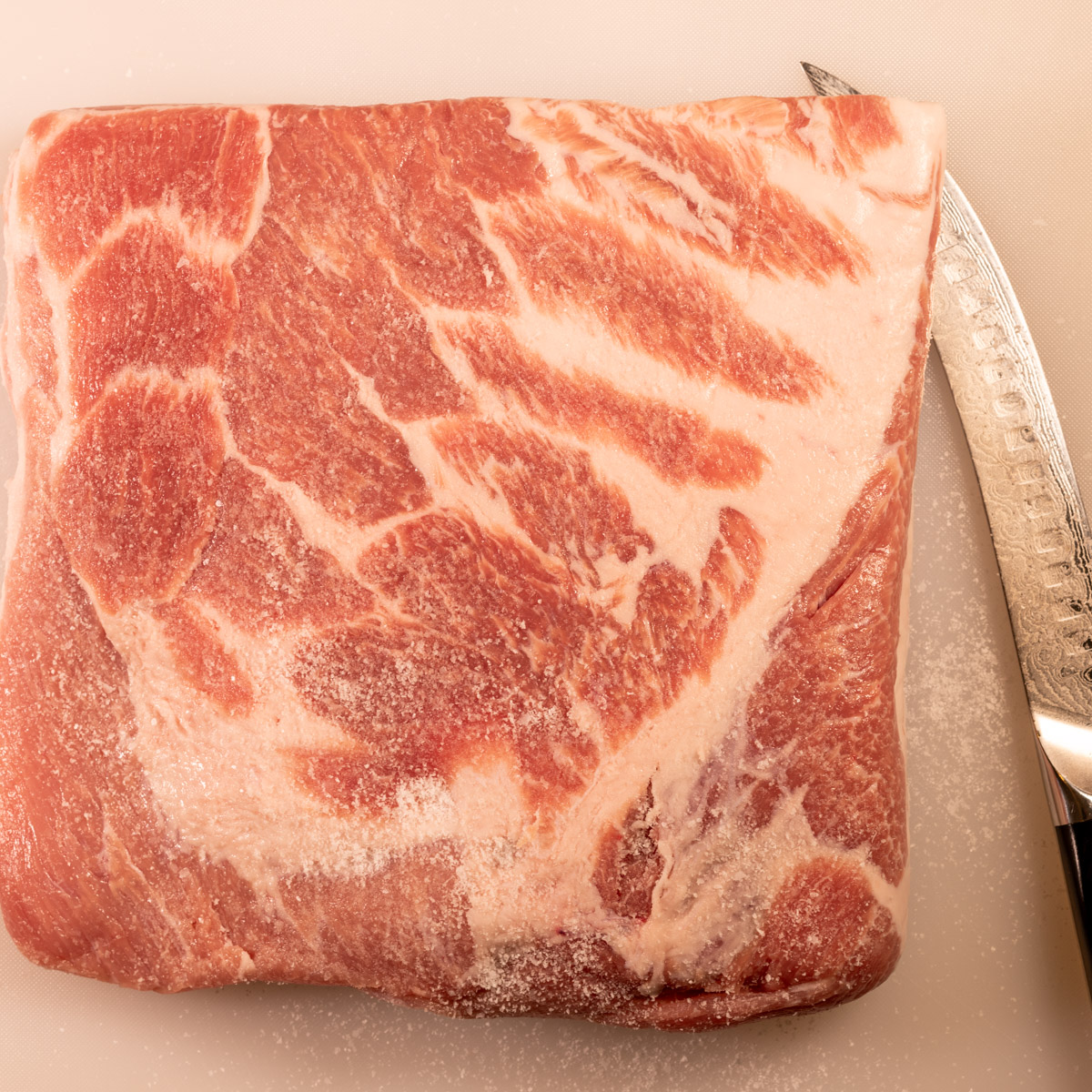
Trim excess fat from the pork shoulder before seasoning.
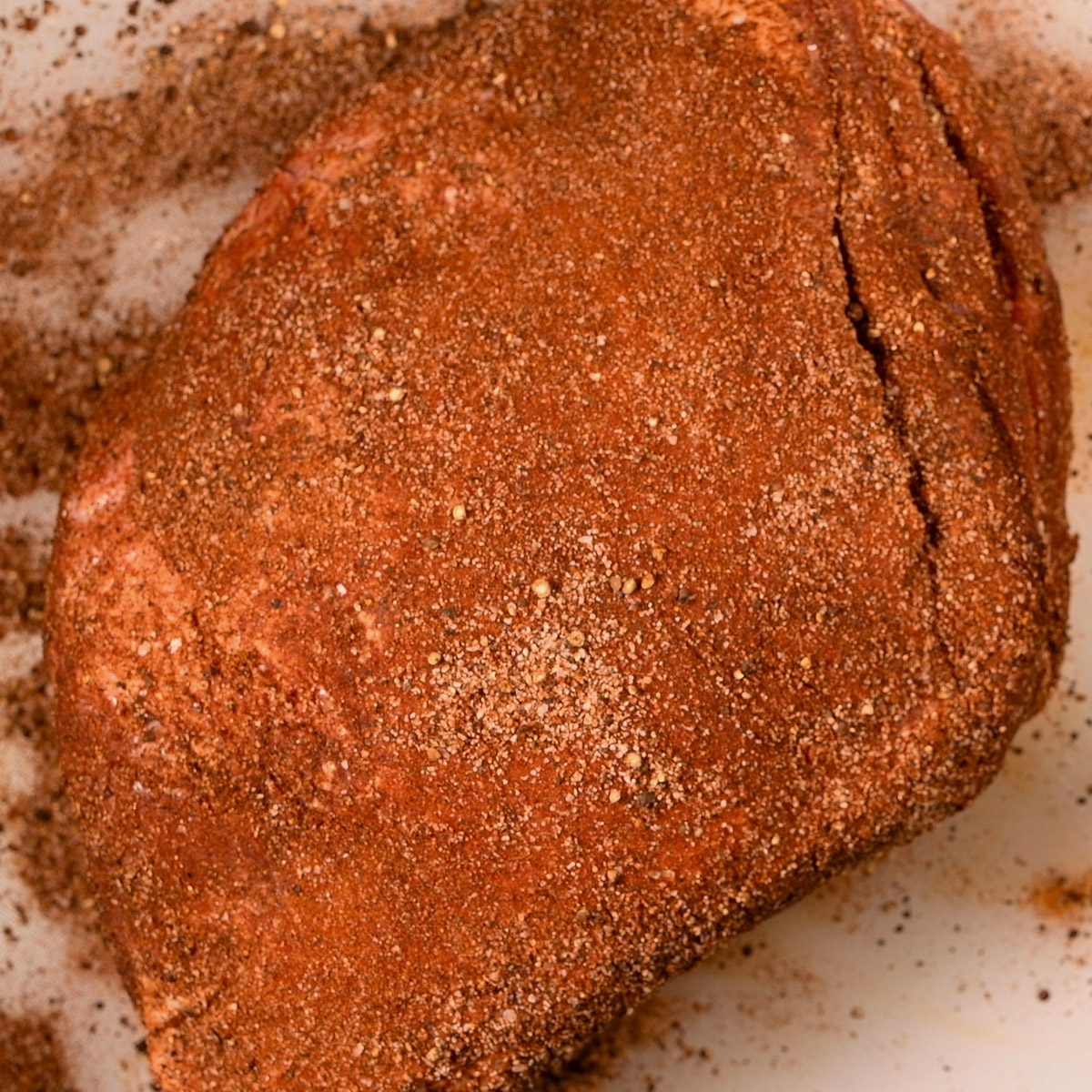
Rub the entire roast with a light coat of olive oil and then liberally sprinkle dry rub over the entire roast. Lightly press the dry rub into place with your hands. Tip: Use a pair of gloves to prevent the paprika from staining your hands.
Setting Up the Smoker
Set up your smoker for indirect cooking at 250°F. If you are using a Big Green Egg or Kamado Joe style ceramic cooker, use good quality lump charcoal that will provide a long, slow burn. Add 4 - 5 chunks of apple wood or cherry wood for a great smoky flavor.
If you are using an offset smoker, use kiln dried oak with a couple of chunks of apple or cherry to provide additional smoke flavor. The reason for this is that an offset smoker burns wood as its primary fuel whereas a ceramic cooker uses charcoal as its primary fuel. Using apple or cherry wood as the primary fuel in an offset smoker for the entire cook time tends to overpower the roast. Kiln dried oak, with a bit of fruit wood added to it, solves this problem.
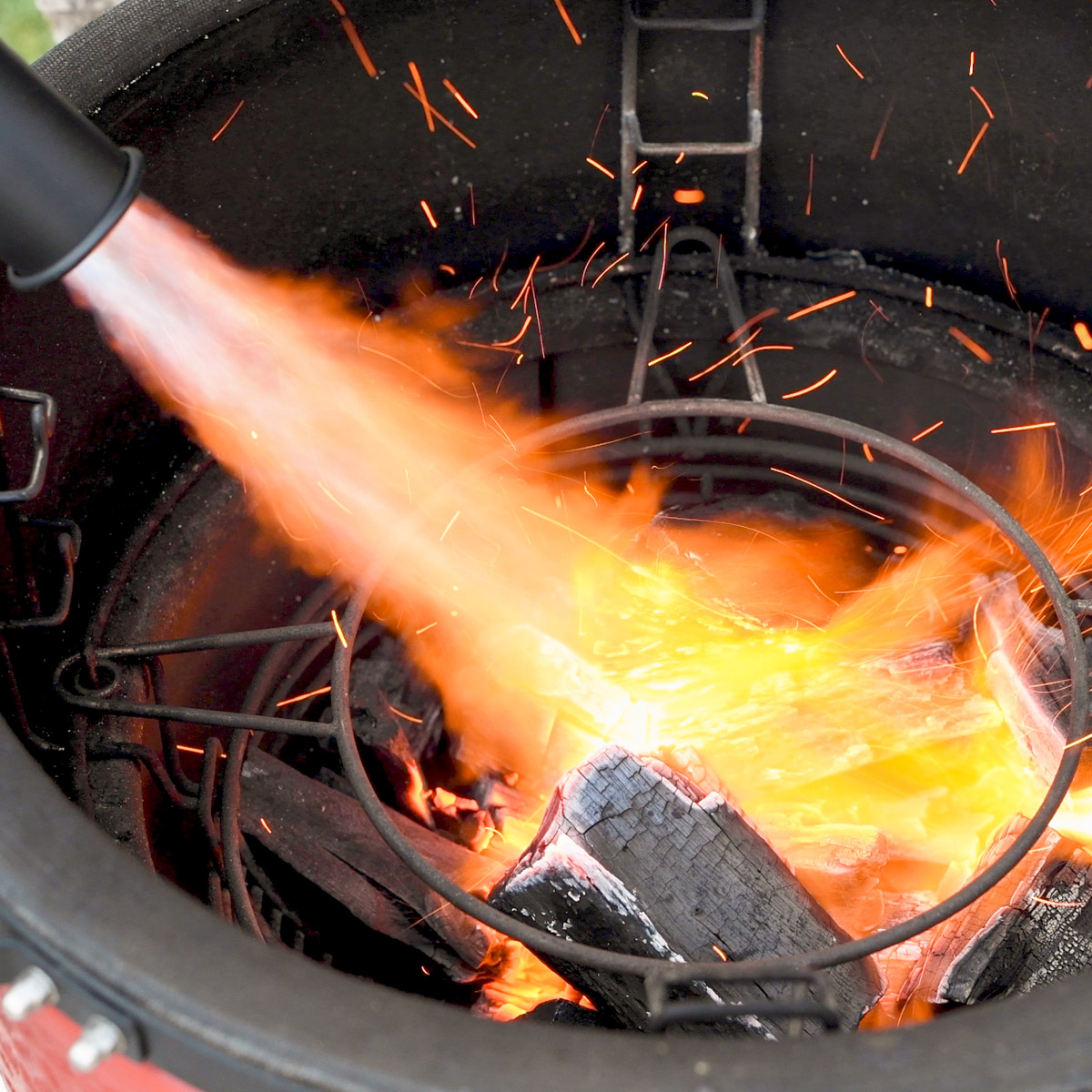
Light the charcoal. Lump charcoal is perfect for pulled pork.
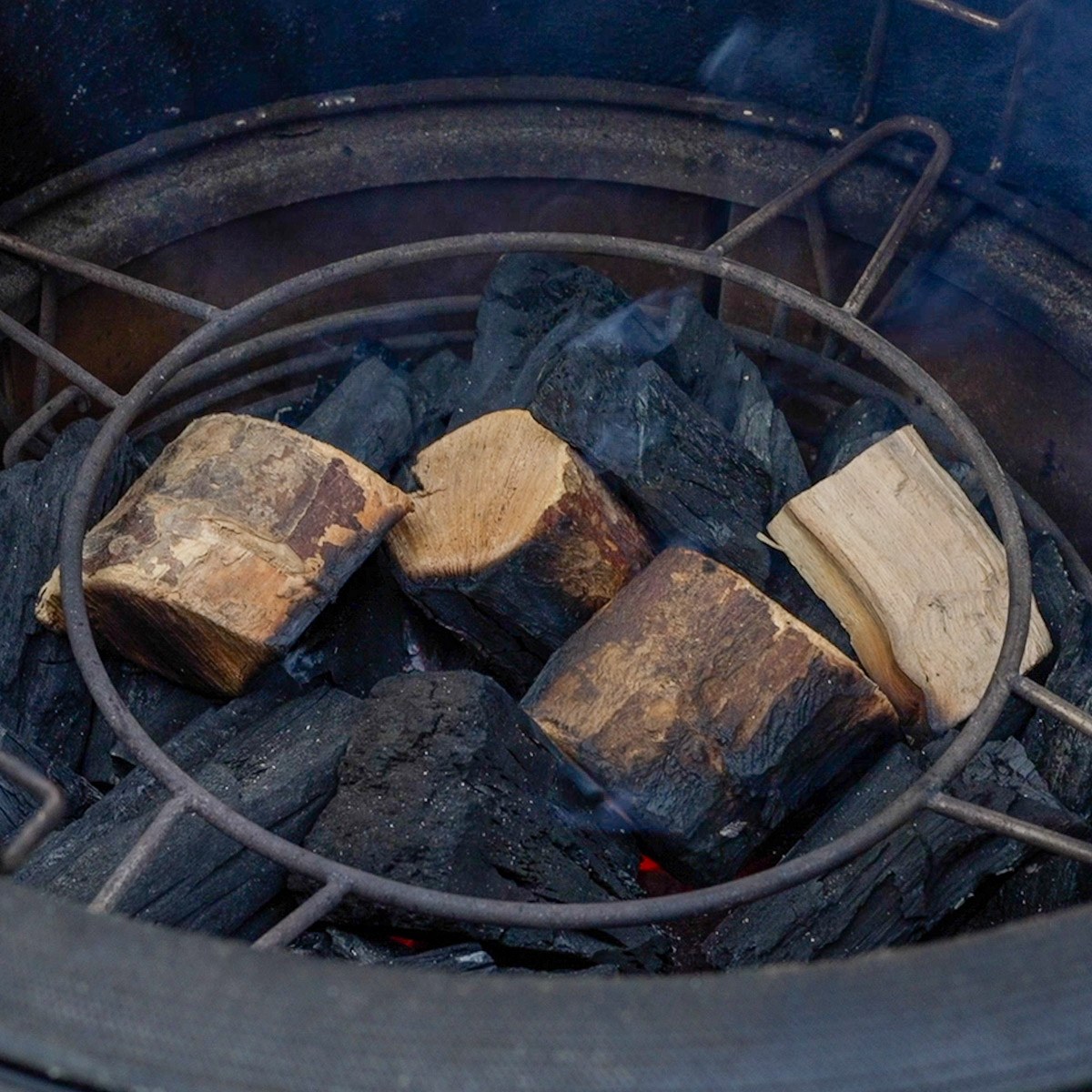
Add wood chunks to the lit charcoal. Wood chunks work better than wood chips for long, slow cooking because they last longer.
Smoke the Pork Shoulder
Place the roast in the smoker. If you are using a Big Green Egg or Kamado Joe ceramic cooker, place the roast in with the fat side up. Both of these cookers will use a deflection plate for indirect cooking. This will cause the heat to rise up and circulate throughout the dome of the cooker. If, however, you're using an offset smoker then place the roast in the smoker, fat side down. The reason is that in an offset smoker, the heat is coming from the bottom. Having the fat facing down will help protect the meat from the heat.
Place a shallow pan beneath the cooking grate and add 1 - 2 quarts of water. This will help keep the roast moist. See my post on Using a Water Pan in Your Smoker for the Best Results for more information. Also, place a temperature probe in the center of the roast and smoke it low and slow at 250° for about three hours until the internal temperature of the meat reaches 165°F. Use a spray bottle to spritz the roast with a mixture of apple cider vinegar and water, every 30 minutes or so, to keep it moist. This additional moisture on the surface will actually enhance the smoke ring and that is a good thing.
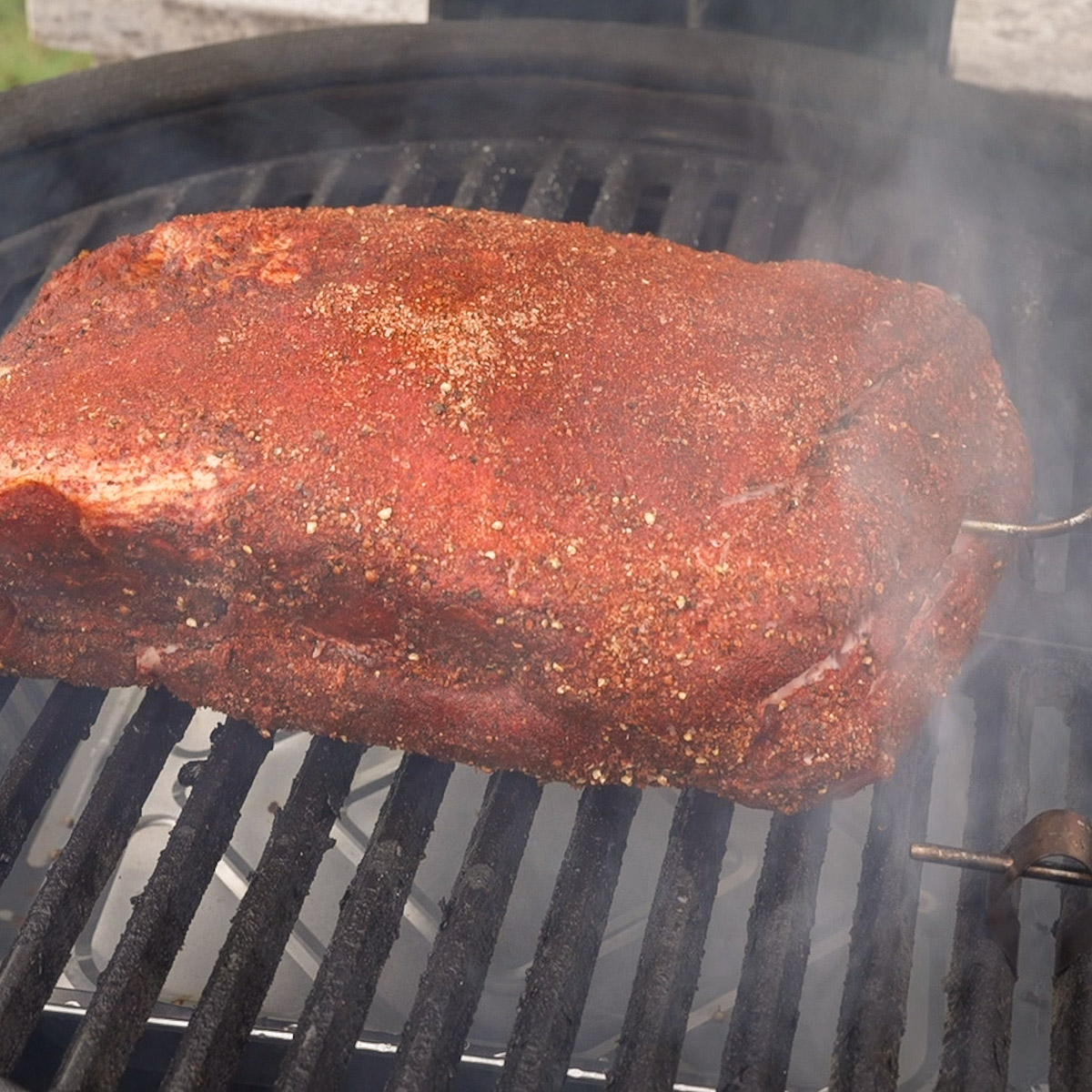
Place the roast in the smoker. Insert a meat thermometer probe into the thickest part of the meat.
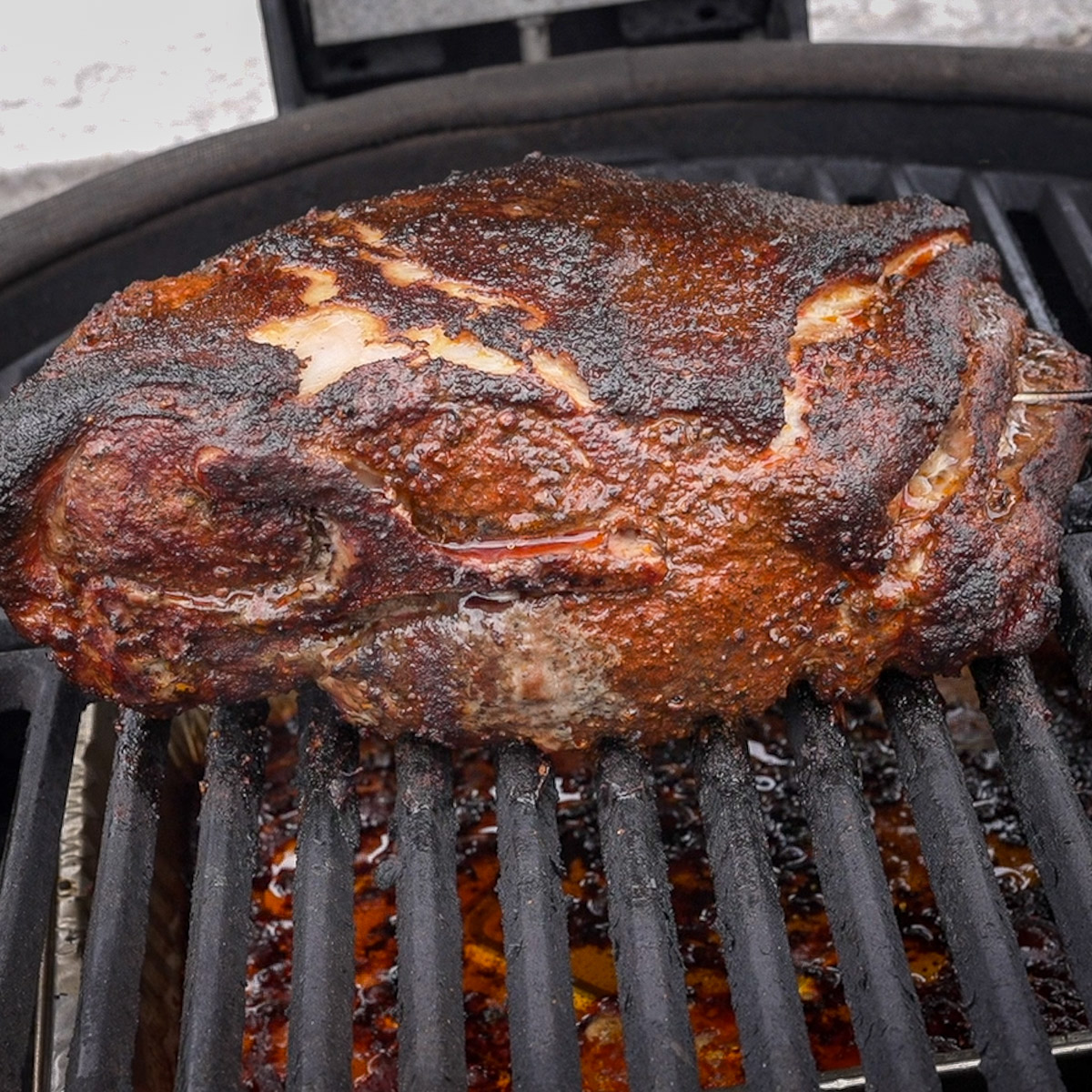
After the roast reaches an internal temperature reaches 165°F, remove the roast and wrap tightly in heavy duty aluminum foil or pink butcher paper. See my post on Will Pink Butcher Paper Burn in a Smoker. Return the roast to the smoker and cook until the internal temperature of the pork reaches 195° F. A heavy-duty aluminum pan wrapped with heavy duty aluminum foil also works well and will catch any juice that leaks out.
The Stall
The stall is when the internal temperature stabilizes and stops climbing. This typically happens around around 165°F. The pork shoulder will stay at this temperature until the collagen breaks down at which time the internal temperature will start climbing again. Wrapping the roast will help it break through the stall. This process is also known as the "Texas Crutch." While wrapped, the pork shoulder will actually braise in its own juices making it tender and juicy.
When the roast hits the target internal temperature of 195°F, remove it from the smoker, wrap it in a clean towel, and place it in a cooler to rest for about 30 minutes. This step is necessary to prevent dry pulled pork. Open the roast too soon and all the juice will flow out of the meat. Wait 30 minutes, and all that juice will reabsorb, creating much juicier pulled pork. Carefully open the foil (there will be a LOT of juice), remove the bone and shred the pork with two forks.
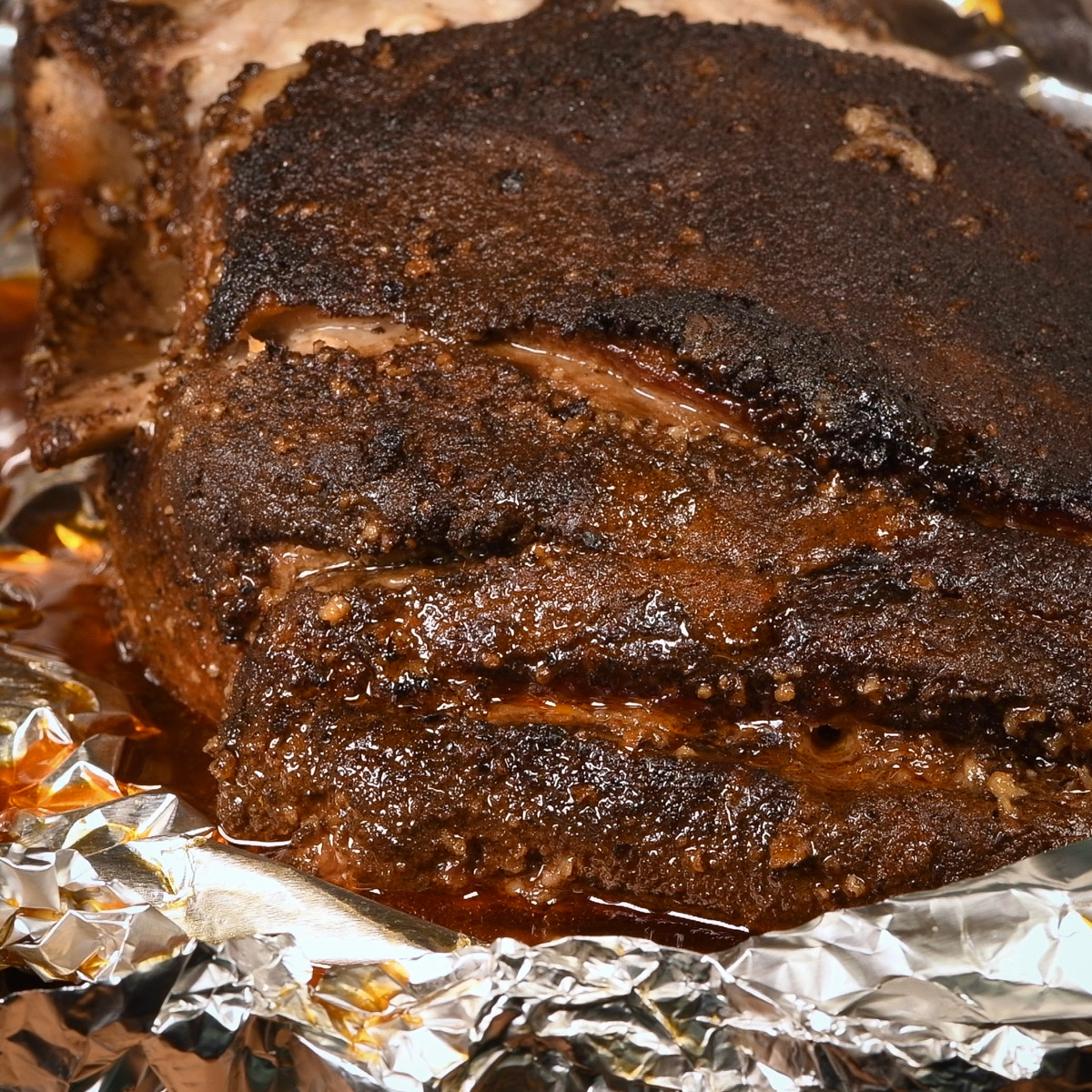
Unwrap the pork shoulder after it has rested for 30 minutes.
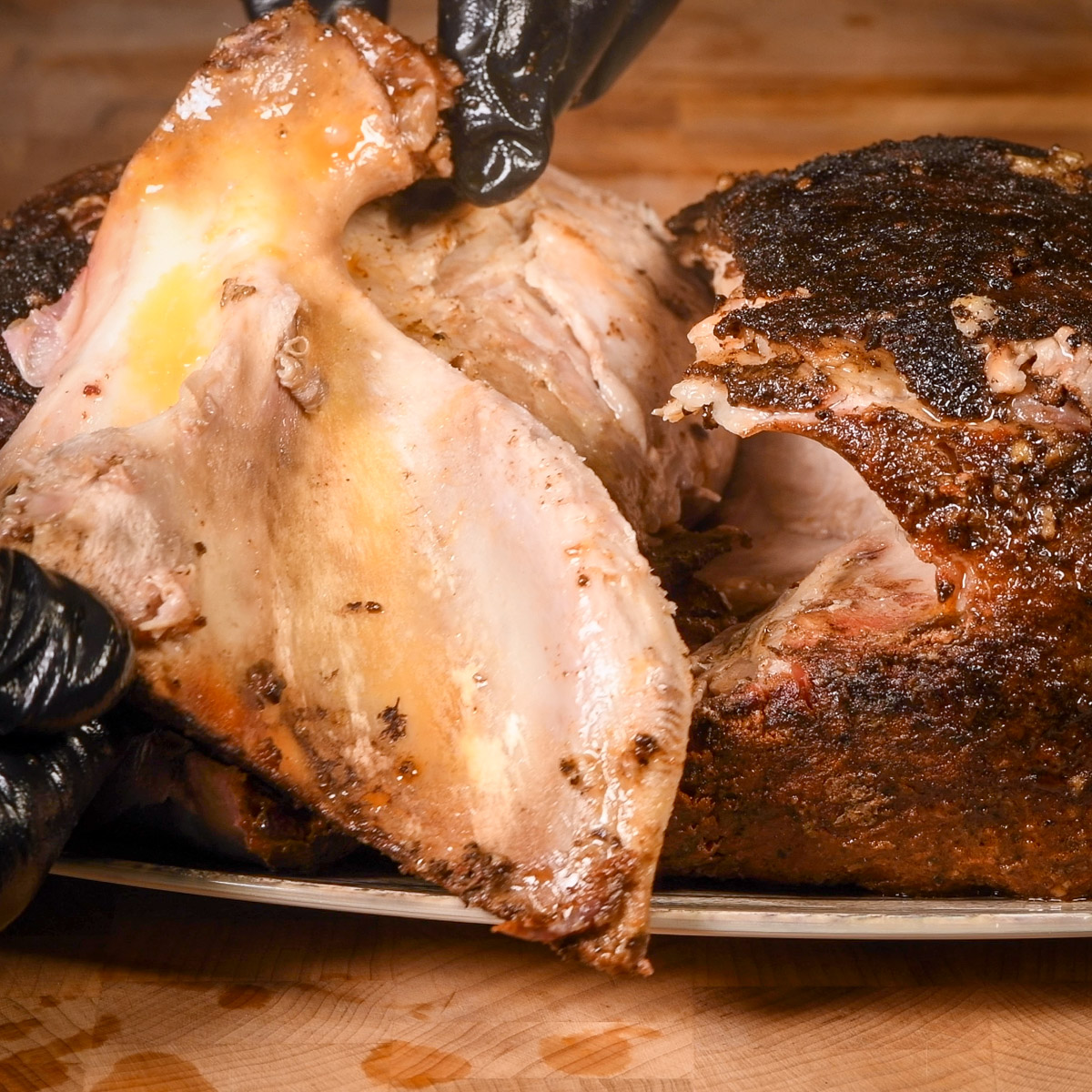
Carefully remove the bone from the pork shoulder. Be careful, it will be hot. Use a paper towel to help grip the bone.
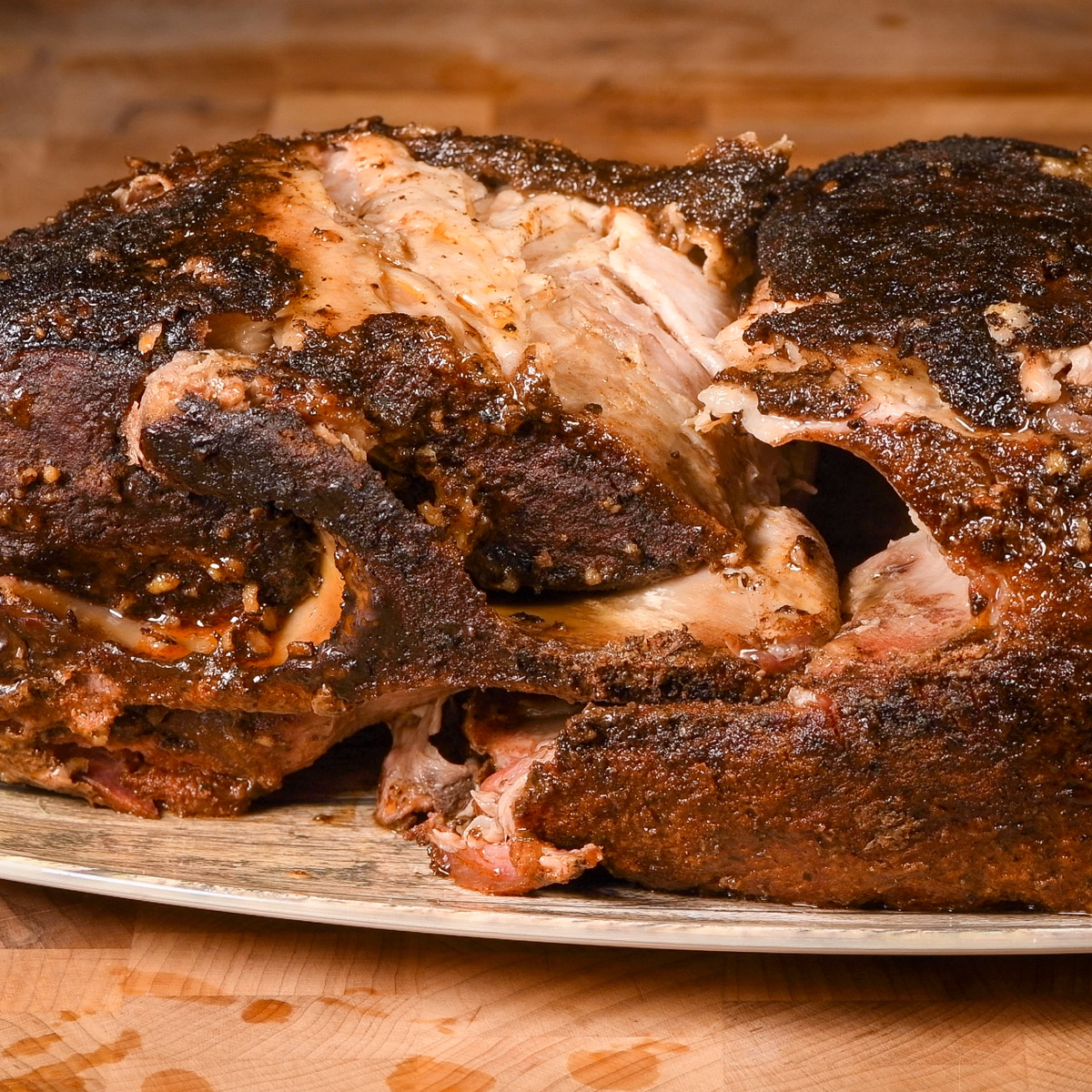
The bone will come out in one big piece.
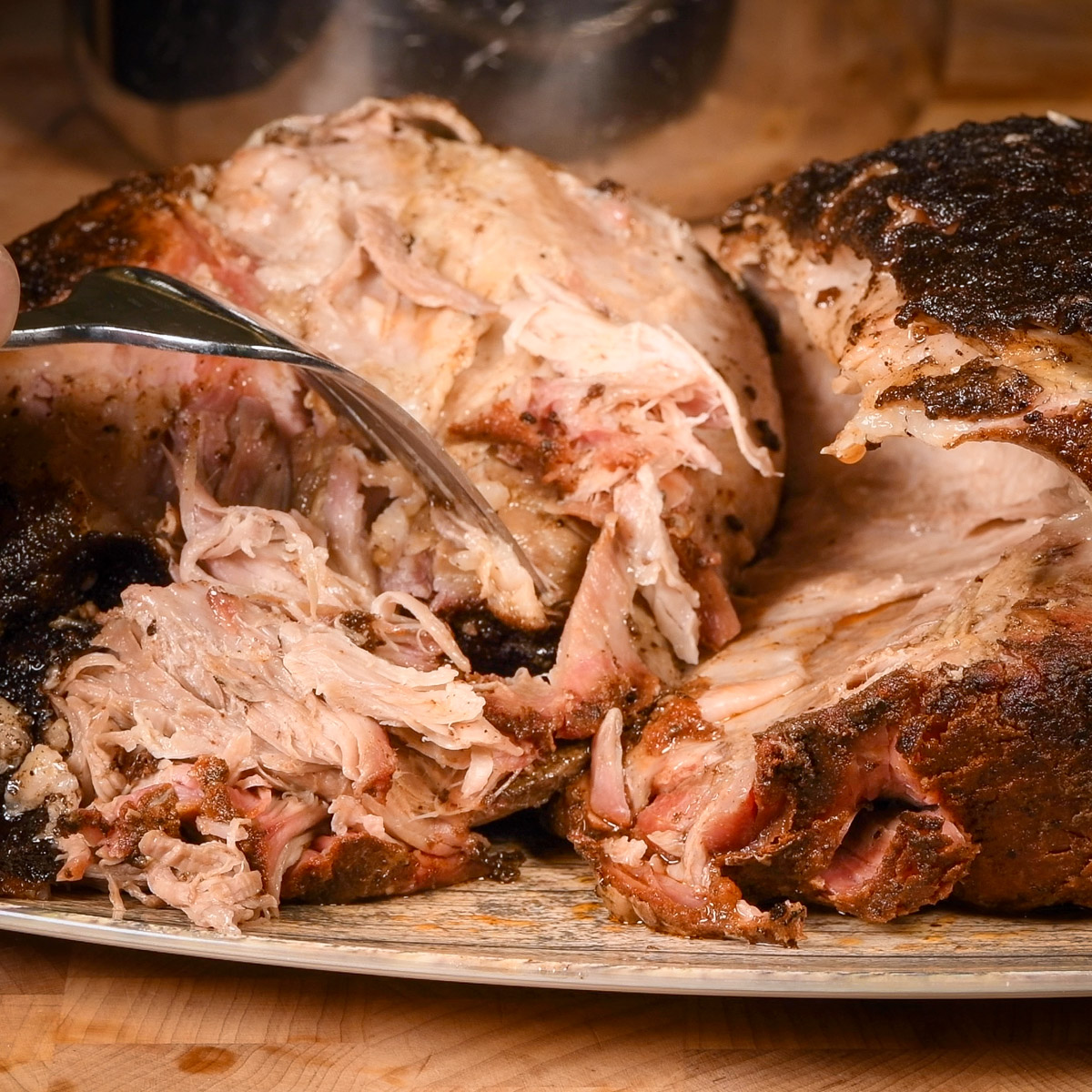
Use forks or meat claws to shred the pork.
The BBQ rub used in this recipe is simple. It's just kosher salt, black pepper and paprika. If you're so inclined, you could add onion powder, garlic powder and maybe a little cayenne pepper to your pork rub, but it doesn't really need it.
Serve the shredded pork as is or pile it high on a toasted bun with your favorite BBQ sauce.
Storage
Store leftover pulled pork in an airtight container in the refrigerator for up to 3 days. It's perfect for making pulled pork sandwiches or tacos.
Top Tip
Let the roast rest a full 30 minutes before unwrapping. This step helps the roast reabsorb a lot of juice and that's what makes it juicy.
Final Thoughts
The best pulled pork can found be right in your own backyard. Fire up your smoker and enjoy the great flavor of homemade smoked, pulled pork. It's worth the effort!
Related
Looking for other recipes like this? Try these:
Pairing
These are my favorite dishes to serve with this recipe.
📖 Recipe
Smoked Pulled Pork Recipe
Ingredients
- 7 lb bone-in Boston butt pork shoulder
- 2 tbs kosher salt
- 1 tbs black pepper freshly ground
- ¼ cup paprika not smoked
- 2 tbs olive oil
Instructions
- Make the dry rub by combining the salt, black pepper and paprika. Stir well. Rub olive oil over the entire roast then sprinkle the roast with the dry rub. Apply liberally and make sure to cover the sides as well.
- Setup the smoker for indirect heat at 250° F. Add 4 - 5 chunks of apple or cherry wood to the coals. Place a shallow pan beneath the cooking grate and add 1 - quarts of water.
- Place the roast in the smoker and cook until the internal temperature reaches 165 F. Remove the roast and wrap tightly in heavy duty foil. Return the roast to the smoker and cook until the internal temperature reaches 195° F.
- Remove the roast, wrap it in an old towel and place it in a cooler to rest for about 30 minutes. Carefully open the foil (there will be a LOT of juice) and shred the pork with a fork.

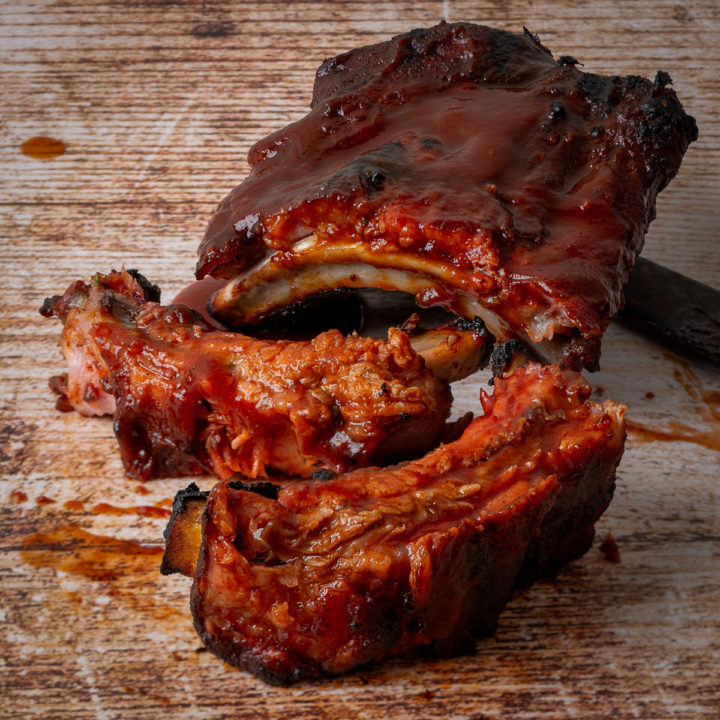
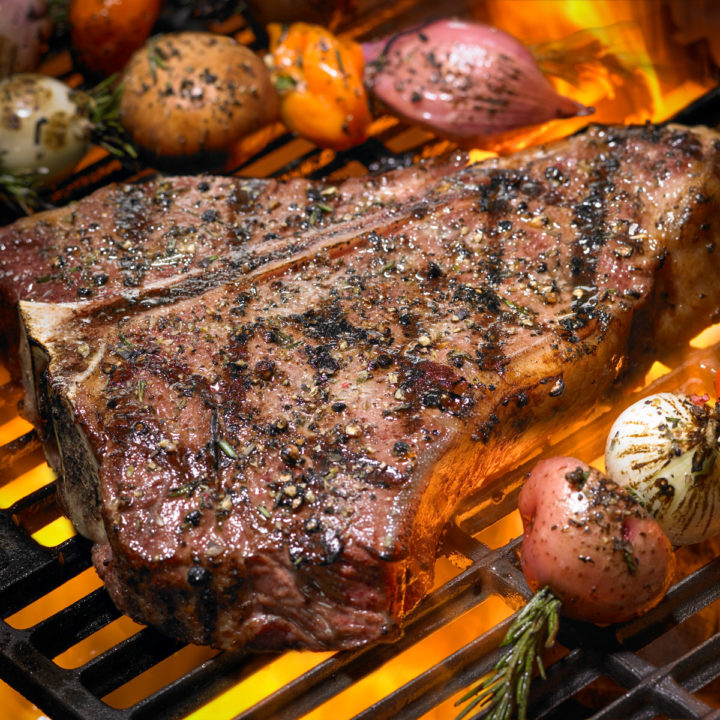
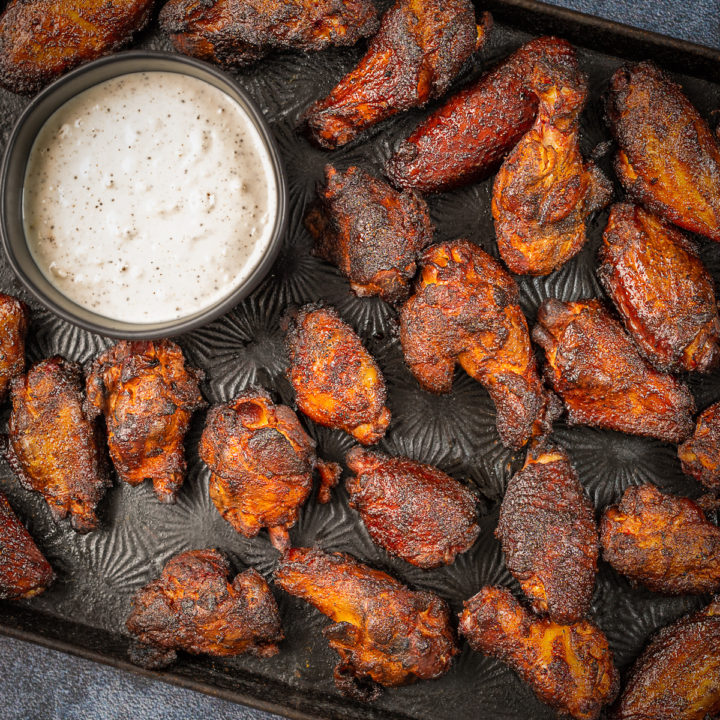
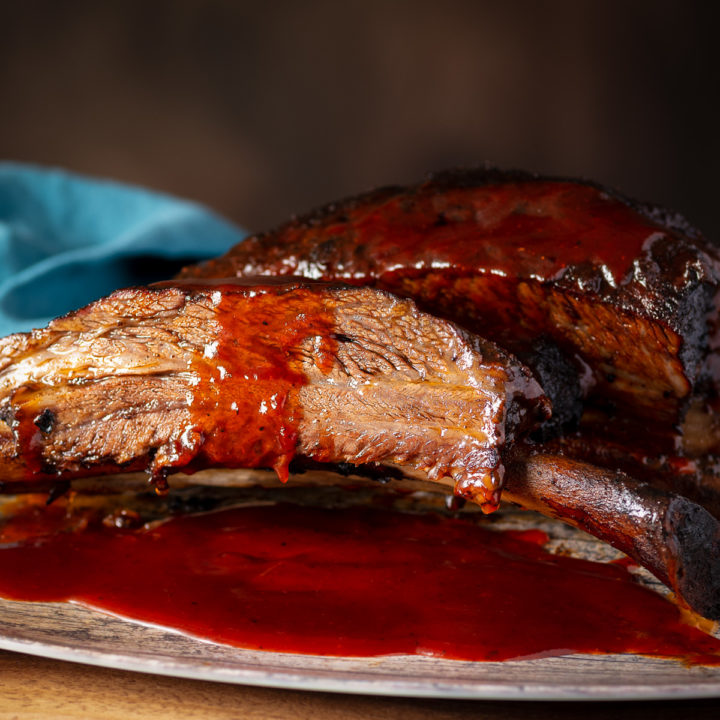
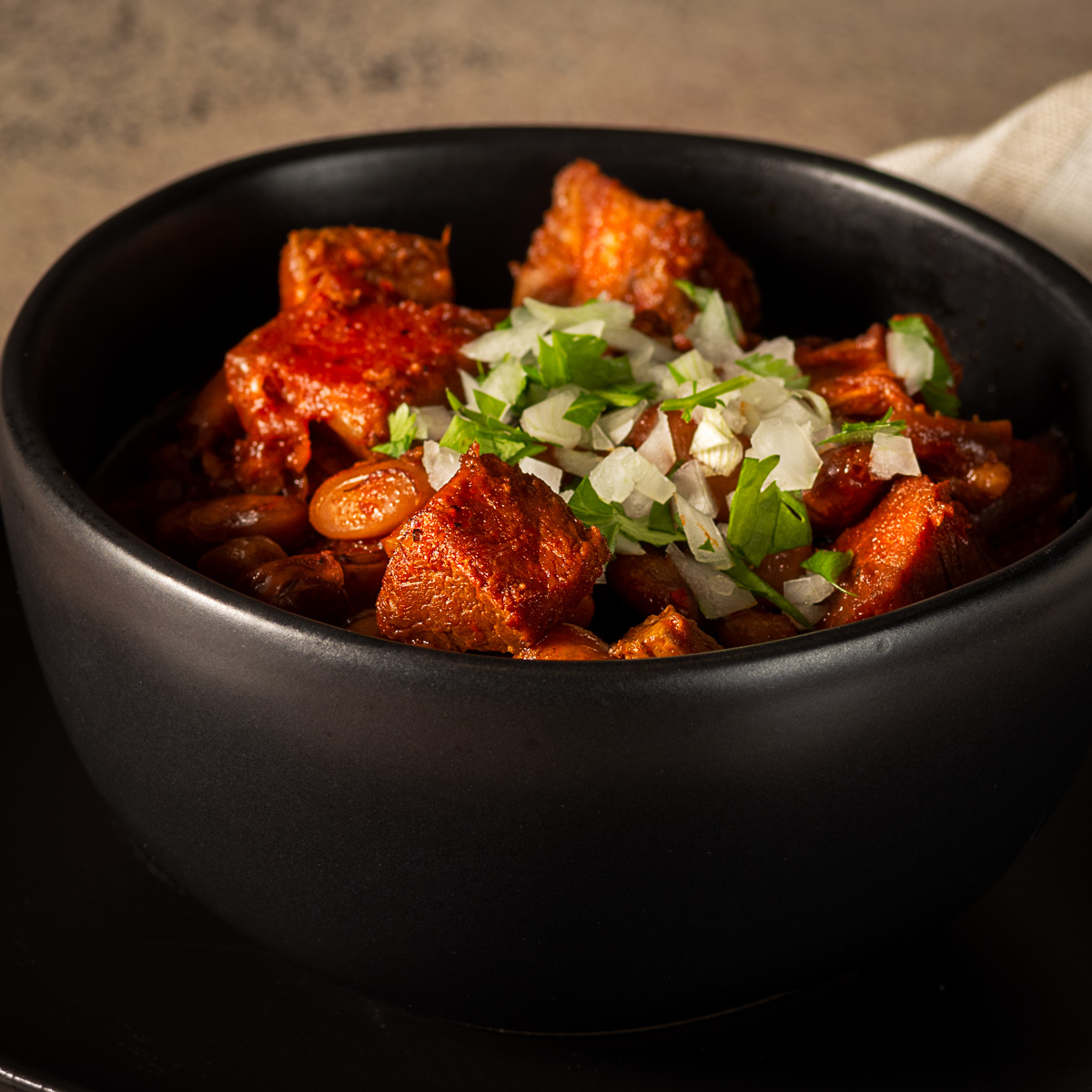
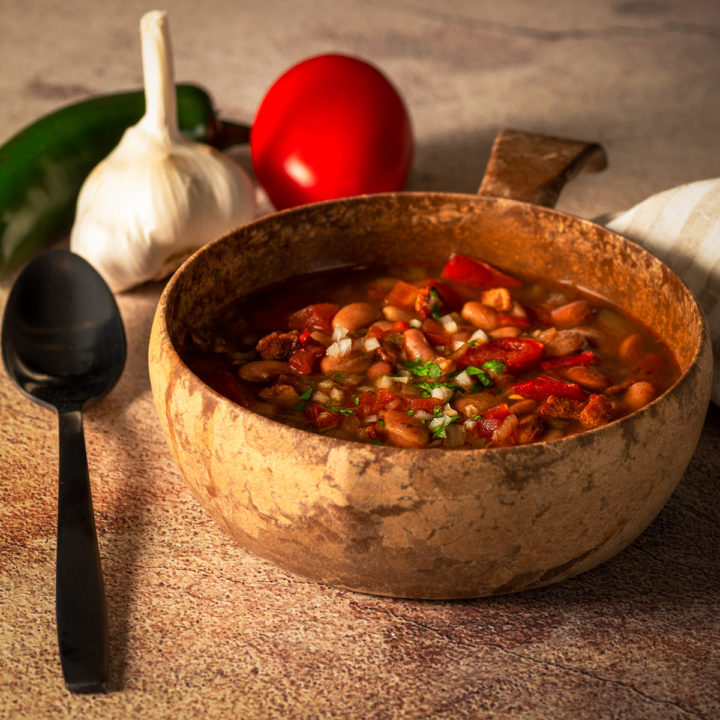
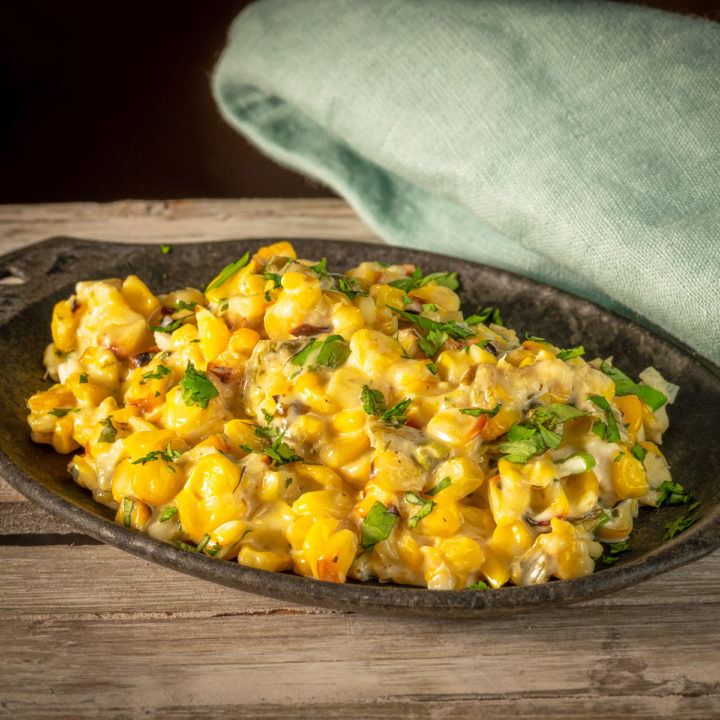
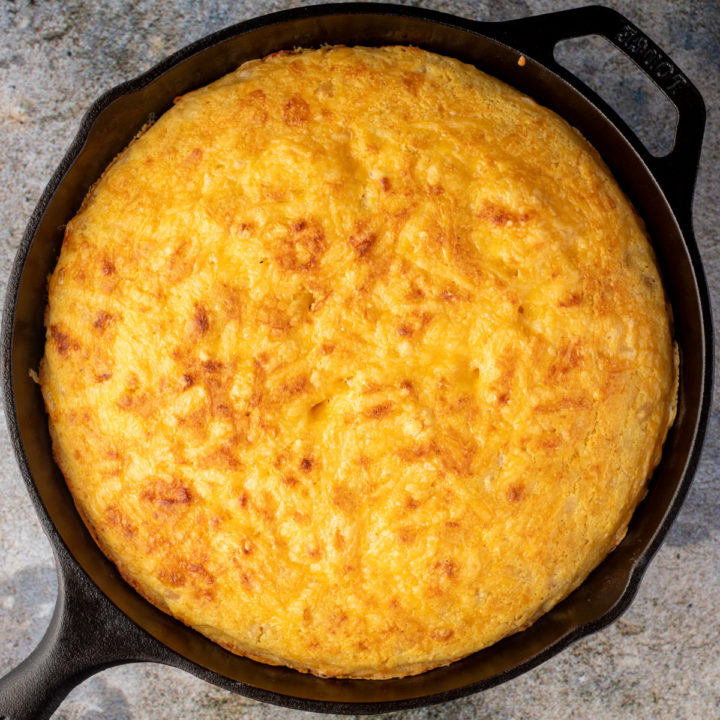
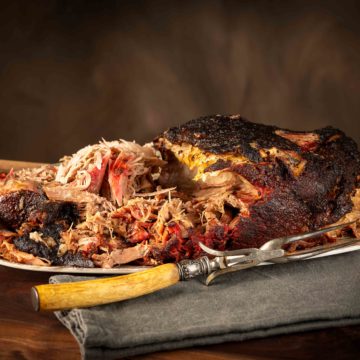
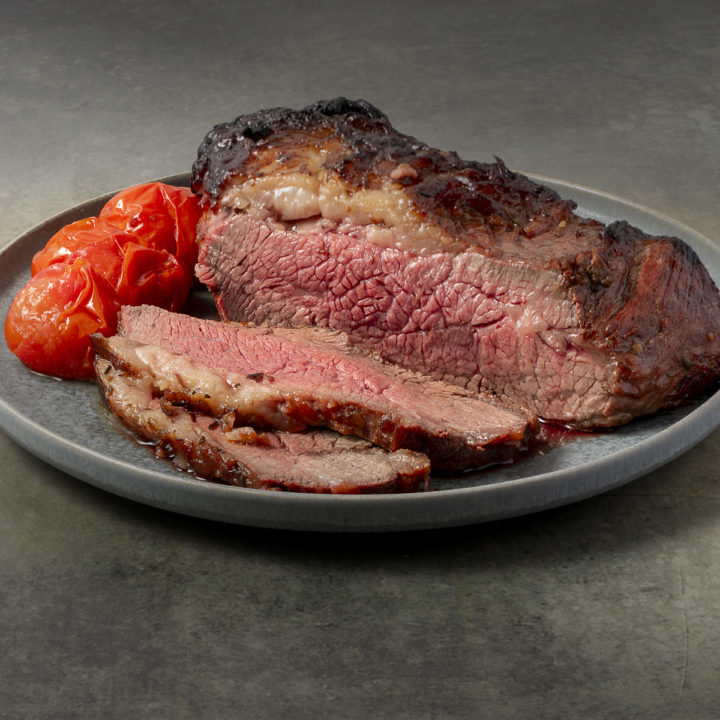
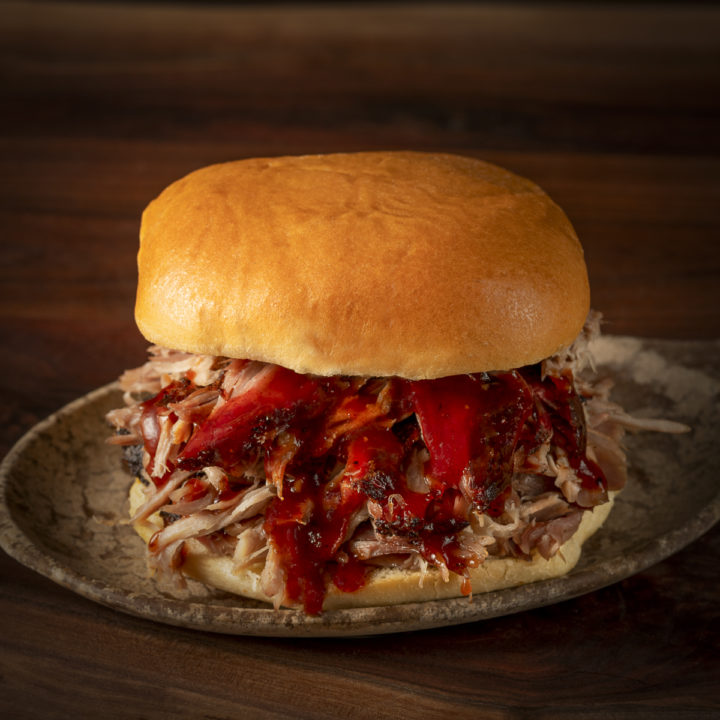
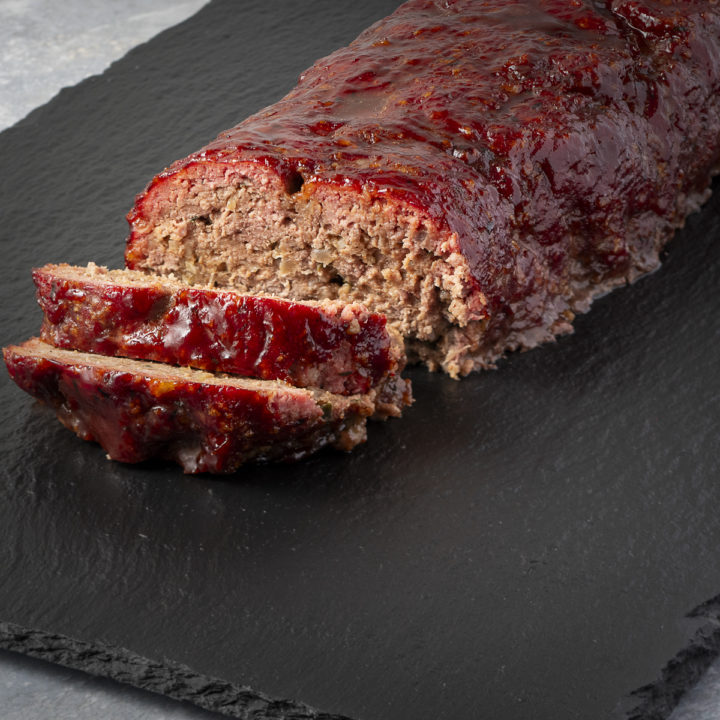
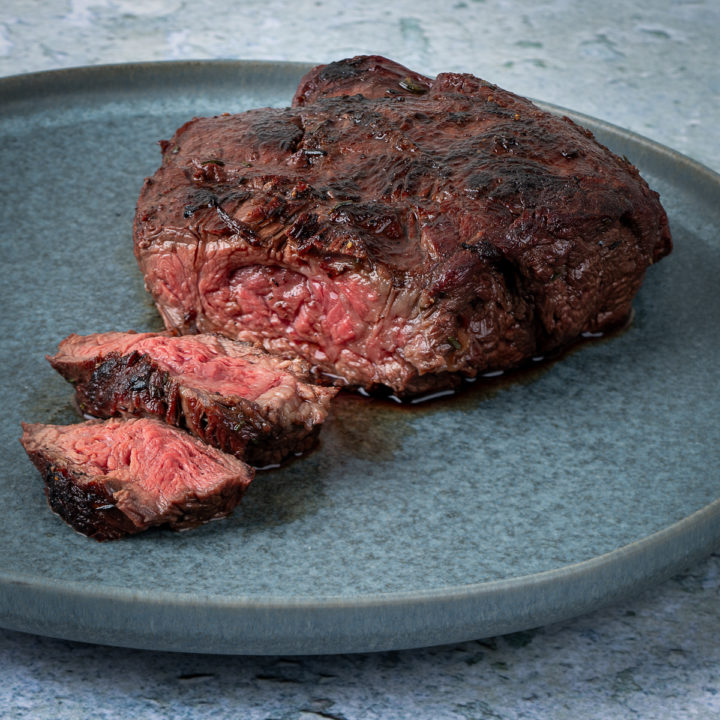
Leave a Reply